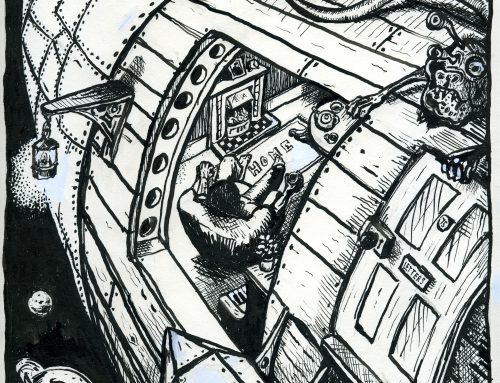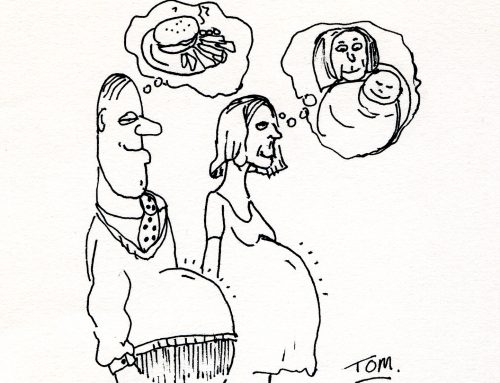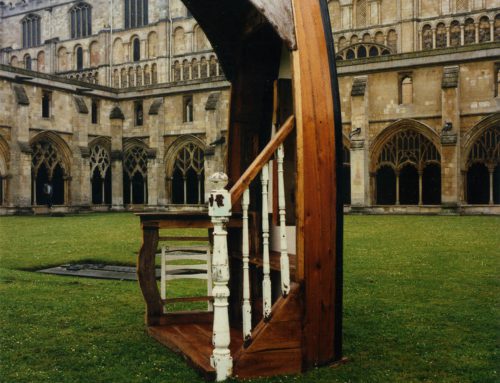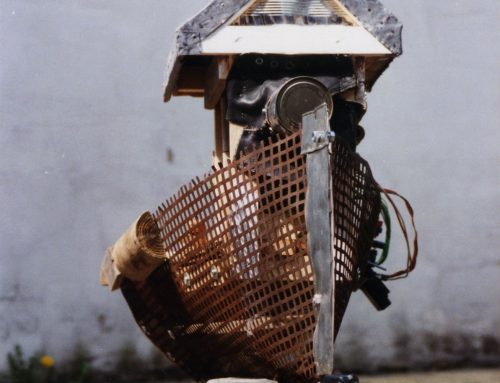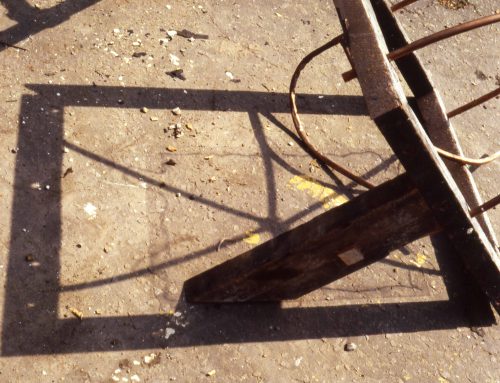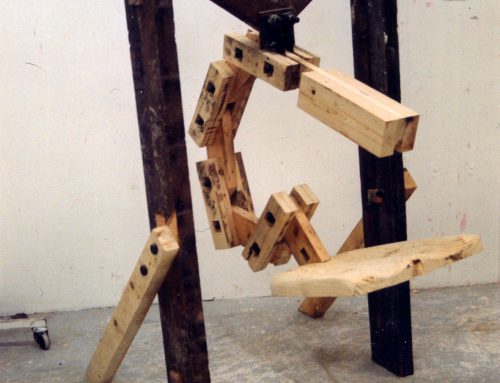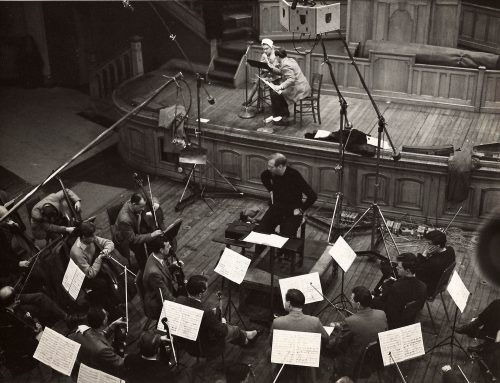In Part 2 of our interview, Piers explained what equipment he uses and his thoughts on photography. In the third part of our interview with Piers, he talks about the demise of the music paper industry, his work for the facial disfigurement charity, Changing Faces, and how that sits in contrast with his celebrity magazine and social diary commissions. Piers also describes some of his best and worst experiences as a photographer.
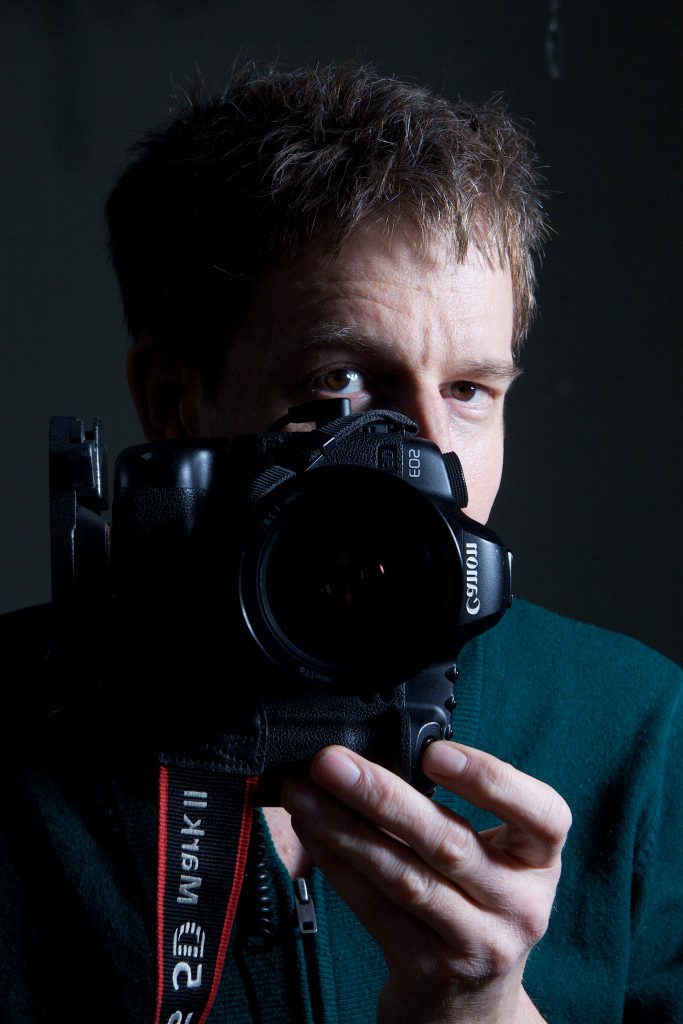
Piers Allardyce self portrait shot at home 17 March 2011
The End of The Maker
In 2000, Piers’ career changed dramatically. His main client, Melody Maker, for whom he had been working for more than a decade, shut down. Sounds had already folded in 1991 and Select went very soon after the Melody Maker, clearly reflecting the shrinking music press readership in the UK. Piers recalls what happened and explains what steps he took immediately after to maintain a career in photography.
“Melody Maker shutting down was an overnight decision,” says Piers. “Some men in suits came up just before Christmas and said, ‘That’s it folks, clear your desks, the magazine is closing,’ much to everyone’s shock and surprise, even though it had been rumoured for some months that the magazine was struggling. I think some people had already seen the signs but I must admit that I was genuinely surprised that they would close the oldest music title in the world one year shy of its 75th Birthday.
“For a few weeks, possibly a few months, the NME had a little strap line saying ‘Now incorporating Melody Maker’, but I don’t think that lasted very long. To be honest, I actually felt that the NME would follow suit. I think I gave it five years so I was proved wrong about that. The reason for that was that the NME saw the writing on the wall and decided they needed to very quickly develop a website and an on-line magazine.
“In the last four years in the Melody Maker’s life we had a new editor who had been a journalist on Smash Hits and basically it was his decision to turn the magazine around by making it a cross between Kerrang! and Smash Hits and cover all the nu metal sounds that were coming through. So it was in the style of Smash Hits, but with a nu metal feel. There were lots of nu metal bands coming through at the time; bands like Limp Bizkit, Korn – they were too numerous to mention. But I think that was the beginning of the end for the Melody Maker. I saw our editor turn from innovator to petty accountant where he spent more time looking at our expense claims than actually keeping his eye on the steerage of the magazine.
“But I enjoyed an incredible renaissance under him and he gave me tremendous opportunities. It got to the point where I was doing somewhere between 25 and 30 percent of the covers in the last two or three years of its life. And the money was good. We were being paid £650 a cover in 1997 and I was getting £250 a feature and doing a lot of features as well.
“So when it folded it gave me the shock of my life. I couldn’t go to the NME, cap in hand, because they had their own favourites and they weren’t going to absorb Melody Maker staff into the NME. It just wasn’t going to happen.
“I was really negative about what I was going to do afterwards. I did have other clients, but I panicked and did a very strange thing. I went to Westminster and Camden Town hall and started working for the Councils! I did a great deal of photography for both councils; some jobs were interesting, others were as dull as ditch water.
“I don’t do very much music photography at all now which is very sad, I think that’s partly because there are fewer avenues for it. I’ve been out of that orbit for a while, but I’m still working a lot. The strange thing is I’ve gone from music to celebrity.”
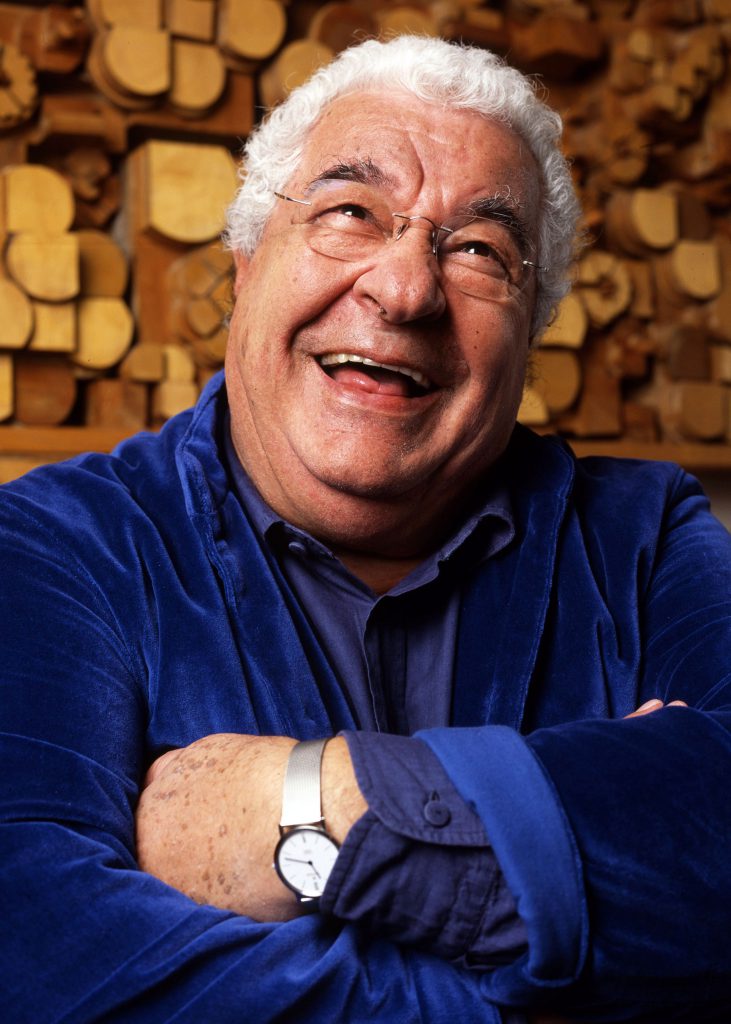
Antonio Carlucio shot at his restaurant in Covent Garden
Antonio was perhaps one of the bubbliest people I had the
pleasure of photographing. He didn’t stop laughing and joking.
Changing Faces
These days, Piers has a variety of clients which include PR companies and celebrity magazines, where the focus is often on fame and beauty. Naturally, Piers is aware that his clients do not necessarily encourage people to adopt a healthy attitude to life, but he remains philosophical about it.
“It’s a very curious thing,” says Piers. “I suppose I am helping to perpetuate this myth of fame, beauty and celebrity. I am very conscious of the fact and I don’t deny it. At the same time, some people appear to enjoy the unreality of it. They like to escape from the realities of life and bury themselves in celebrity culture and magazines, but not always for the same reasons.
“Not everybody reads about celebrities because they want to look at beautiful people. Although they might want that life themselves, I think many people secretly believe that celebrities have terrific problems of their own, and when they go into some kind of meltdown, the readers take pleasure from that. That’s why there is so much paparazzi imagery around showing people falling into gutters with cellulite, unkempt hair, sweat patches under the armpits – that kind of thing.”
Almost as an antidote to his commissions for celebrity magazines, Piers works for a charity called Changing Faces, which has lead to some of his pictures being exhibited in the National Portrait Gallery.
“It’s the flip side of celebrity – the flip side of vanity,” explains Piers. “I have been involved with Changing Faces for seven or eight years, possibly before I started working at OK! Magazine, or round about the same time. They were set up nearly 25 years ago by James Partridge, who is possibly one of the most charismatic people I have ever met. He is extraordinary.
“He has amazing powers of persuasion. He can get people, who are reluctant to do things, to come around to his way of thinking without him having to twist their arm. He doesn’t have to try terribly hard because they are swept up in the tide of his enthusiasm. They recognise this zeal that he has for the charity.
“He has completely devoted his life to changing people’s perceptions of disfigurement, and there is still a lot of misunderstanding about it. I understand that there are figures which suggest that there are a quarter of a million people who don’t even leave their house for fear of ridicule. That’s been fairly well documented.
“James was involved in a terrible car crash where the car caught fire and he was very badly burnt. He was still at university when he decided to get into the front passenger seat next to the driver who, I think, had been drinking. Then the car overturned and caught fire. He had lots and lots of surgery over a period of time and he recognised that people like himself weren’t represented by anybody. There was no one to turn to so he thought he’d do something about it.
“About eight years ago I had just broken up from quite a long-term relationship and I was feeling pretty bereft about the whole thing, and that’s when I was asked to photograph about a dozen different people around the UK. I decided to do it pro bono. So I travelled all over the country.
“At the time the pictures were going to be used to illustrate the charity and bring it publicity, but about four years after they were taken, Benjamin Zephaniah, who also works very closely with the charity, along with some of the senior people in the charity, decided on an exhibition called Benjamin’s Britain, exploring four themes which were animals, punky reggae, Muslims and facial disfigurement. Benjamin was the curator and he chose about four or five of my pictures.
“Originally it was in Manchester, then it toured and went down to Birmingham and then to the National Portrait Gallery. For me that was the greatest accolade: not only did I get exhibited at the National Portrait Gallery, I also got exhibited for doing something serious and interesting. And some of my pictures from the same exhibition could be found at the Science Museum in Kensington at roughly the same time.
“The pictures were all of people with disfigurements, young and old alike. It’s a good body of work but you won’t find any of those pictures on my website, and the reason for that is that I haven’t approached the charity about it. I’d need to get permission from all the subjects and also I’m just a bit concerned about the pictures being out there. It’s one thing to place pictures of amputees, people with skin conditions and people with other setbacks, but I think when you are putting people with facial disfigurements on the internet, that’s different. The whole ethos of it is different. That’s the feeling I have but I haven’t really examined it too closely and I need to talk to the chief executive about it and see what he thinks. He might say the opposite!
“There is also another body of work I haven’t spoken about. I worked for a title called Positive Nation Magazine which was devoted to people with HIV Aids. I worked for them for about six years before the magazine went through an upheaval. I think it actually closed temporarily, but it’s back again in a different guise. But in that time I photographed some remarkable people, and one of those pictures also went into the National Portrait Gallery under the heading Gay Icons. The picture was of an openly gay South African high-court judge with HIV called Edwin Cameron. I think he’s retired now. He was appointed by Nelson Mandela to the high court in South Africa. And in South Africa there is an enormous stigma, not just to HIV but to homosexuality, particularly in high places.
“I photographed lots of different people for lots of issues, but Sandy Nairne, the director of the National Portrait Gallery, Sir Ian McKellen and some other judges decided to put this exhibition together and it went into the gallery about two years ago. They had commissioned Mary McCartney to go out and take additional pictures for the exhibition, but then they realised I’d photographed Edwin Cameron and in the end a lot of the pictures were ones that had previously been taken.”
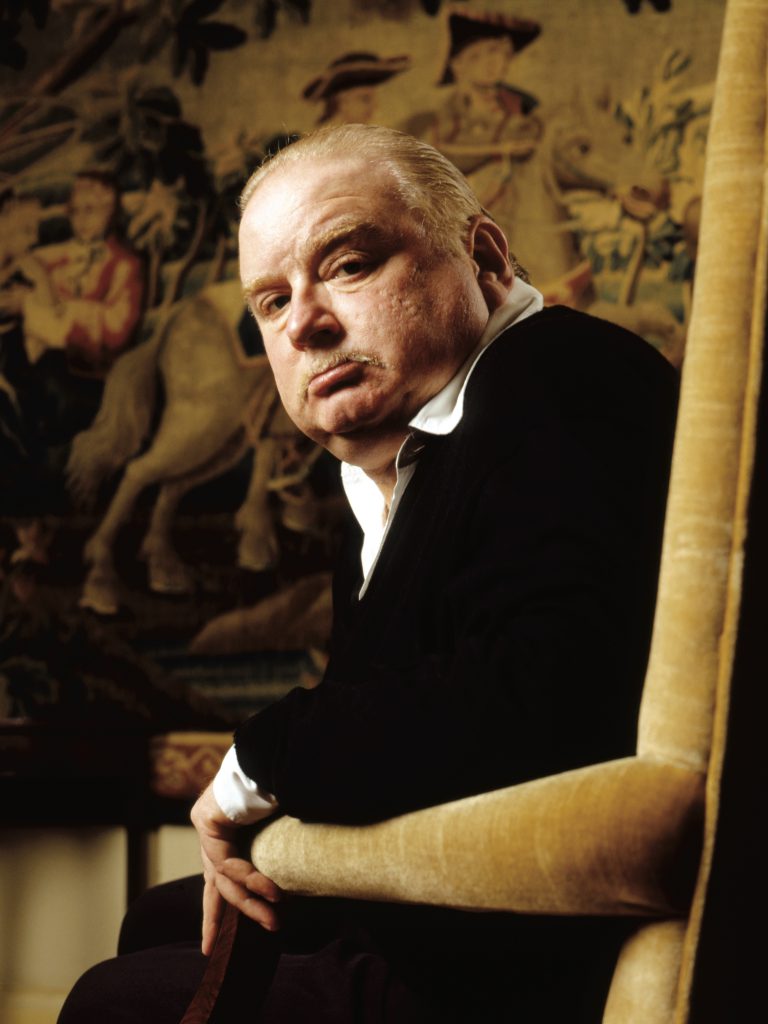
Peter Ackroyd Autumn 2005 shot in Knightsbrige
Photos by Piers Allardyce 07976 724 390
This wasn’t an easy assignment as Peter was very quiet and stern.
Nonetheless it lends a certain gravitas to the image.
People Problems
It is probably not overstating matters to say that, during his career, Piers has photographed a huge variety of people in almost every kind of social situation. Naturally, there have been times when his subjects have proved difficult and Piers had to be diplomatic and resourceful to get the job done. He offers a good example of one such situation.
“I think the first major problem I experienced was with a band when I was doing a cover shoot for a festival guide to Britain which was going to be a supplement included with the Melody Maker that summer. It was all very last minute and the problem was that it couldn’t be done in a photographic studio, so I’d gone to enormous trouble to set this whole thing up and get it right. I actually had to build a set at the recording studio!
“Just to paint the picture; I imported strips grass and planted those on the floor. I had to erect a tent and build a mock fire at the entrance of the tent. I then had to create a scene at dusk, so I had to fake a night sky for which I used a dark blue colourama.
“To make the burning embers of the fire I had to acquire and arrange orange yellow and red coloured tissue paper, but the fire needed kindling. I made that by smashing a basket which I’d got from a permanent market place in Chelsea, where they had lots of expensive plants, flowers and vastly overpriced weaving baskets. Time was fast approaching so I was forced to decimate this basket in the back of the taxi! It was a major challenge, an incredibly tight deadline and I sweated buckets for about five hours to set the scene.
“Then these three guys walk into the room, one of them folds his arms, steps over and says, ‘No mate, I’m not doing this!’ I think it was the drummer. I look at him and said, ‘Why not!’ He just said, ‘I’m not doing it. ‘I said ‘well, I’ve gone to a lot of trouble and this is for a cover shoot, it’s important.’ He was so reluctant and obnoxious that, for the first time in my career, I actually considered putting my camera down and walking out of the room. Luckily the two other members of the band managed to bring him round in the end. Then he grabbed hold of two speaker stacks, which was his contribution, and put them either side of the tent, which was actually a good move because it worked quite well. I thought it looked pretty good and that’s what I ended up with, so the shoot went ahead. But I had to placate this guy for quite a long time and that was one of the worst incidents.
“A few months later, the same summer, I saw him standing by a gate at Glastonbury and I glowered at him but he didn’t see me. I just thought, ‘I hate you! You made my day an absolute nightmare.’ But he didn’t see my expression and that was the end of that.”
Throwing Caution to the Wind!
In the course of our interview, I reminded Piers of a story he casually told me many years ago when we met at a function he was photographing and I was attending. It struck me as significant in that it revealed something about his exceptional openness and spirit of adventure. In many ways, it is these qualities which have helped him become a successful photographer. The story also shows how the itinerant work of a photographer can easily lead to a rather unhealthy lifestyle if not kept firmly in check!
“I went to Philadelphia with a fairly well-known journalist who bored me rigid,” Piers laughs, “and it was to photograph Oasis who hadn’t recorded or performed for quite a long time, so Melody Maker wanted to break this story back in England.
“This journalist and I set off on this plane together; he reviewed and I photographed the gig the following day. After the gig we got back to the hotel lobby and I left him because I got drinking with someone at the hotel bar. Then a guy and girl said, ‘Do you want to come to a party?’ so I agreed. I still had all my photographic equipment with me because I’d gone straight from the gig to the bar and I just jumped into this car with these people.
“I felt particularly reckless that night, wanted an adventure and I went looking for one. I was already old enough to know better, possibly in my early 30s. But there was no reticence there at all, I just thought, ‘Right, I am going to take up the gauntlet and run with it,’ and that’s exactly what I did.
“What I didn’t realise was that this party was at least 90 minutes outside Philadelphia and I’d accepted this ride in their car and didn’t know where we were going. But before we actually left town the guy said, ‘Look we are going to go on a little detour because there is something quite interesting happening,’ and I said ‘Oh, OK.’
“We went to meet this guy in a car lot who was filling balloons with helium, and there were queues of people paying a dollar a time to suck balloons! It was really bizarre. I think the idea was you were supposed to get a hit from this, not just talk in a silly squeaky voice. But I don’t think I’d taken enough to make any different to me.
“Then we got back in the car, which was packed with four or five people at this stage, and drove to a place in the middle of nowhere. I still don’t know where it was to this day. And there then followed the most bizarre series of events.
“We arrive at this condominium which was on one floor. I think it belonged to some student and there must have been about 15 or 20 people or so in this one room. I didn’t know anyone at all and it was like something out of a David Lynch film. I would not use that comparison lightly. You don’t find yourself in a David Lynch situation very often, but I was reminded very much of a scene in, I think, Blue Velvet.
“There were only three pieces of furniture in this room: a very large bed with a glass mirrored sealing above it, and for some reason there was also a bath and maybe an armchair, so a lot of people were sitting on the carpet.
“I was sat on this bed chatting very merrily to somebody when this woman came over and said to me, would you like some K? I had no idea what that was at all. I said, ‘Do you mean Special K?’ and she said, ‘I don’t know, but here we call it K.’
“I put my hand out and she said, ‘Turn your hand the other way around,’ so my palm was face down and she said, ‘now clench your fist,’ so I did and she put this powder on the back of my hand. I said ‘Don’t I have to draw it into a line or something?’ She said ‘No, just snort it all in one go, it’s already been chopped,’ so I snuffed it quite quickly. I didn’t think anything more of it and nothing happened. Then she came over again about 20 minutes later and did the same thing. That’s when I started feeling really weird and lost all use of my limbs. I fell back onto the bed and I could see myself receding in the mirror. At some point I was floating as well. People have likened it to LSD, except you don’t have the use of your limbs. So it’s a bit like having an out-of-body experience, when your mind just becomes disengaged from the rest of your body.
“So I was floating on this bed and felt really uncomfortable because I had lots of very expensive equipment in my bag at the foot of the bed and the place was filling up with yet more people. I couldn’t even lift my head off of the bed and it was frightening, but also incredibly stimulating. I couldn’t switch my mind off and couldn’t resolve my predicament at all.
“And the reason it was David Lynch-ian was because there was this very tubby guy, possibly gay, but certainly very camp, doing this bizarre gyratory dance by himself, and I don’t remember any music playing. It seemed to be this mimed dance and the whole thing was like the Candy Coloured Clown scene in Blue Velvet. There’s a scene where these people are doing a strange dance as the room is filling up with strangers and there is a slight air of menace. I wouldn’t claim that there was any menace at this party, but because of my state of mind I did feel very unhinged.
“And then it gradually got lighter and lighter and I suddenly realized, to my horror, as my faculties started coming back to me, that I had to fly back to England that day. But the funny thing was, as it got lighter outside the use of my limbs started returning and I was able to get off the bed. It’s difficult to say, but I reckon I’d been stranded there for about five hours.
“I managed to get a lift some of the way back into Philadelphia, found the journalist in the hotel and we got on the flight. But I remember the flight to England was really uncomfortable; I felt really jaded, tired and nauseous, and I said to myself ‘I will never get into this kind of situation ever again!’”
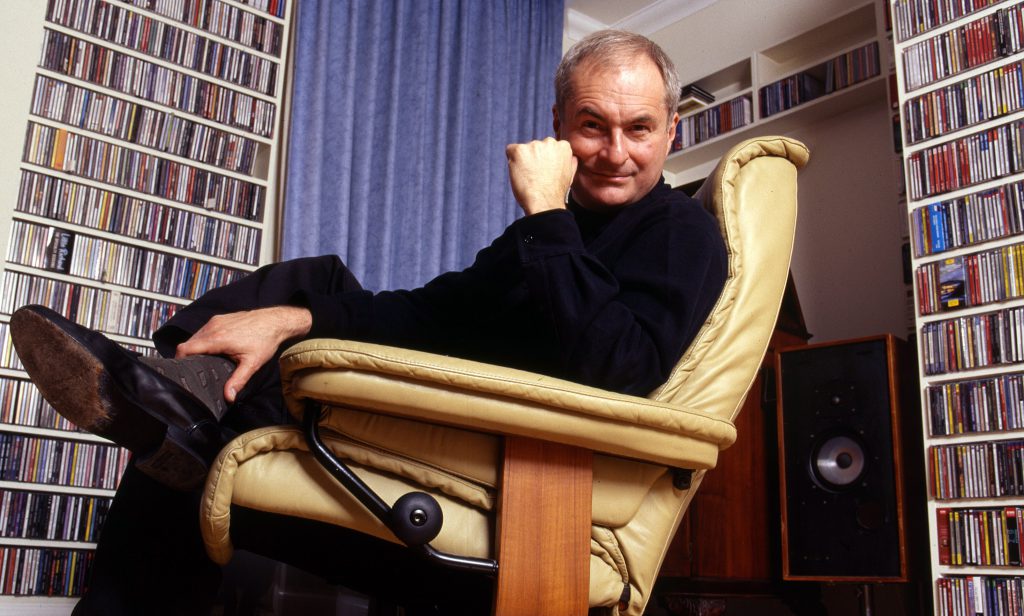
Paul Gambacini at home in North County Hall
27 January 2000
Paul was the perfect foil for the camera instinctively knowing what was expected of him. Relaxed, charismatic and full of stories.
Ambitions and the Future
Many years on, Piers now has a young family and takes a little more care to make sure he gets home safely. He is still young enough to look to the future, but can also reflect on what has been. When asked what his initial ambitions were for his career in photography Piers says that he doesn’t really know what he was hoping for, but is now contemplating the possibility of exhibiting his work, or even publishing some of it in book form at some stage in the future. “Some photographers plan for their futures in terms of what they want from it,” explains Piers. “There’s Martin Parr, for example. Martin Parr believes that if you aren’t going to get a book out of it, it isn’t worth photographing, so he’s a firm believer in getting things published that stand the test of time. For years he took pictures and one of his ambitions was to be part of the Magnum photo agency. Magnum is a photo agency that was set up in the 1930 and named after a magnum of champagne. Its co-founders were very famous indeed. It specialises in things like war-torn countries and very serious portraiture – the sort of groundbreaking pictures that are going to gain historical value. It’s fairly niche, I would say, and only the world’s best photographers can join.
“But the vast majority of photographers lurch from one job to the next; they are happy that it’s feeling them and they don’t particularly have a long term objective about where it is going to lead them. They just hope it is not going to dry up and that they have got a job for life. And I think you could put a vast number of photographers into that category.
“There are things I’d like to do but I can’t do them now as I have a young family. But also it’s a bit torturous, because first of all you have got to come up with the idea and then putting that idea into operation is pretty tricky became you have to spend a lot of your own money to make it come to fruition. So I think that I have been happy to remain in the business for as long as I have, particularly when I’ve seen so many people go out of business. I think I am quite fortunate, really.
“But I do need variety to make it interesting and I just hope I get more pictures published and find other opportunities where my pictures go into galleries.
“Although I have never actually staged my own exhibition, I will one day when the moment is right. I am not quite sure what genre. There are at least two different kinds of exhibitions I’d feel comfortable with, including the Changing Faces material and the comedians that I photograph for the Edinburgh fringe shows.”
Summing Up
A photographer can only really evaluate what they have seen and photographed by looking at it retrospectively. The news photo of today inevitably becomes a historical and cultural document, but its perceived value is dependent on whatever has subsequently happened to those people, places or objects that are pictured. Piers attempts to sum up what he has done, how he feels about it and the reasons why it all came about.
“There are certain defining moments in my career: the Pixies gig, my first big break with Melody Maker, chance encounters and other things that set me on the rise. I’ve been very fortunately in a long career. Most people are incredibly accommodating and I find the majority of people I’ve photographed perfectly charming.
“I haven’t done blindingly well insomuch as I am not a household name, but I am happy. I’m not ecstatic, because I think I could have probably pushed myself further, but we all think that. You’ve got to strive as much as possible but it is not always easy to find what doors are open to you.
“So much of it is to do with confidence in your own ability. I often look at the work of other photographers and think, ‘I wish I could do that,’ and ‘what am I going to do about it?’ It’s that hidden ingredient which no one can put their finger on that separates the great from the good.
“It’s quite strange because I feel like I have been buffeted from one direction to another. It’s quite often a case of having a fortuitous meeting or being offered a job and then that particular position evolving into something else. So there aren’t always necessarily conscious decisions that you are making for yourself. Sometimes one particular job leads to another. I think sometimes fate isn’t necessarily in your hands.” TF
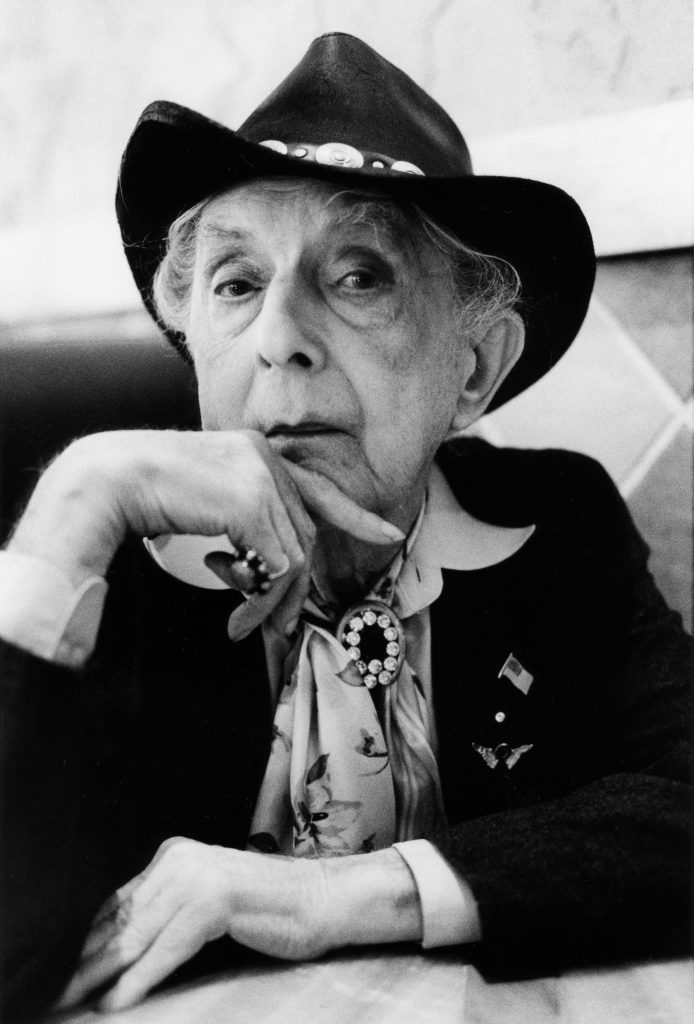
Quentin Crisp in his favourite diner on the Lower Eastside of New York City. 9 April 1999
This was a dream come true. A meeting with “A English Man in New York”. Quentin was easy to find in the local directory and even easier to make an appointment with.
“I make no apology for telling the same story. It’s what people want to hear. Besides, I have run out of original things to say”
Piers picks some of the most memorable moments of his career:
Piers: “Here are a few incidents and anecdotes I thought might amuse, plus my top 10 gigs that were commissioned by Melody Maker.”
“Her Majesty the Queen, The Duke of Edinburgh and their royal entourage sweep in the drawing room at Trinity Hall Cambridge. Stephen Hawking is by the fireside with his wife and the college Dean.
‘Why, Stephen how marvellous to see you again,’ says the Queen to Stephen.
“There follows an ear splitting silence whilst Stephen taps out a response on his audio keyboard and a robotic voice issues forth.
‘Why does IT speak with an American accent?’ the queen says incredulously. Stephen’s smile has broadened until the whole room chuckles in merriment.”
“During the same visit to Trinity Hall, the Queen is inspecting some of the curious and historical college artefacts on display. At this point I notice we have been joined by Terry Waite, the former special envoy to the Archbishop of Canterbury. I notice that Terry is twiddling with something in his hands. As the Queen proceeds to the top of the table, Terry lifts the mystery item to his just below his chin and says ‘Ma’am, this is the blindfold used during my five years in captivity.’ I was very disappointed. Had he stretched the blindfold across his face I would have had the next cover of Private Eye!”
“In conversation with Paul Gambaccini in 2011 at a Terrence Higgins Trust function at The Royal Courts of Justice, he tells me this anecdote: Alistair Cooke, of Letter from America fame, was approached by an elderly lady who excitedly said, ‘Aren’t you Alistair Cooke?’ to which he replied ‘No, madam, I’m Bob Hope.’ ‘That’s funny,’ she said, ‘I’m married to Bob Hope!’”
“Sitting with Quentin Crisp in 1999 in his favourite diner on Lower Eastside, New York, he says to me, ‘I make no apology for telling the same story again and again. It’s what people want to hear. Besides I have nothing original left to say! My literary agent wants me to travel to England on some awful tour. It will probably kill me.’ Quentin died peacefully in his sleep three weeks after this conversation in a place called Chorlton-cum-Hardy, England.”
“Q Awards after party in the late ’90s. I snatch a couple of shots of Liam Gallagher who is drinking with mates. He throws a bottle of beer at me which hits my camera and bounces harmlessly off the lens hood. Liam strides over very quickly and before I have time to compose myself, he gets me into an arm lock and starts to twist my arm until it hurts. There are lots of onlookers who are smiling wryly. Their expressions are all the same. ‘What did you expect from Liam without asking for his permission?’ I am not shaken by either pain or embarrassment. On the contrary, I am wondering what I can sue him for if it really kicks off!”
“At the Princess Memorial Lecture on HIV/AIDS as A Worldwide Pandemic 2000.
“Queen Elizabeth Conference Centre, Westminster. I am shown to a modest little room full of VIPS including Bill Clinton, Chelsea Clinton, Cherie Blair, The British Surgeon General and numerous MPs and people of power. Working for the National AIDS Trust, I am the only photographer present. Suddenly I am stranded with these people as my aid has gone AWOL. I have a hired digital camera which I have no experience of, no brief and little confidence without a guiding hand.
“All those in the room are in deep conversation. I have a very limited window of opportunity to get their pictures. Not knowing the protocol and high on adrenaline, I thrust myself over to Bill Clinton who is being mobbed by the star struck. ‘Err, excuse me Bill,’ I say roping an arm around his shoulder to get his attention, ‘can I get a picture of you with these people over here?’ He obliges willingly. It is not until afterwards that I am told that I should have called Bill Mr President and not been so familiar. I still regard this episode as a turning point in my career. Never be afraid or hesitant by the situation you are in regardless of power or celebrity. I took control and got results.”
Most entertaining subjects:
Ewan McGregor, Desmond Tutu, Quentin Crisp, Antonio Carluccio, Michael McIntyre, Russell T Davies, Paul Gambaccini and George Melly.
Most disconcerting but likeable:
Glenda Jackson, Maggi Hambling, Peter Ackroyd and Alex Chilton
Most horrid:
David Starkey, Geri Halliwell
Top 10 gigs photographed:
The Pixies, Town & Country Club 1989
The Residents, Sadlers Wells 1989
The Sundays, Riverside Newcastle 1990
Public Enemy, Brixton Academy 1990
Grace Jones, Brixton Academy 1990
Revolting Cocks, Astoria 1991
Marc Almond, Albert Hall 1992
Morrissey, Finsbury Park 1992
Suede, 100 Club 1992
Happy Mondays, Brixton Academy 1992
Part 1 of this interview can be found here: Part 1
Part 2 of this interview can be found here: Part 2
More of Piers’ work can be seen here: www.piersallardyce.com

